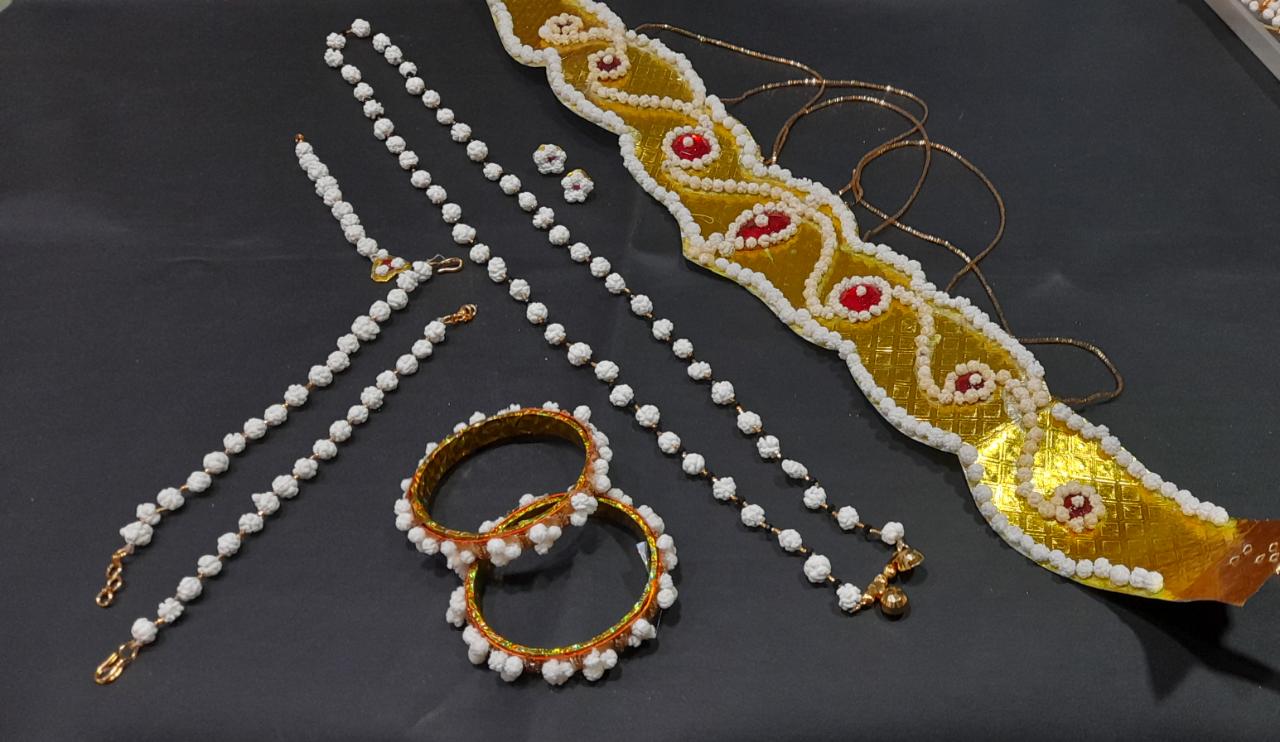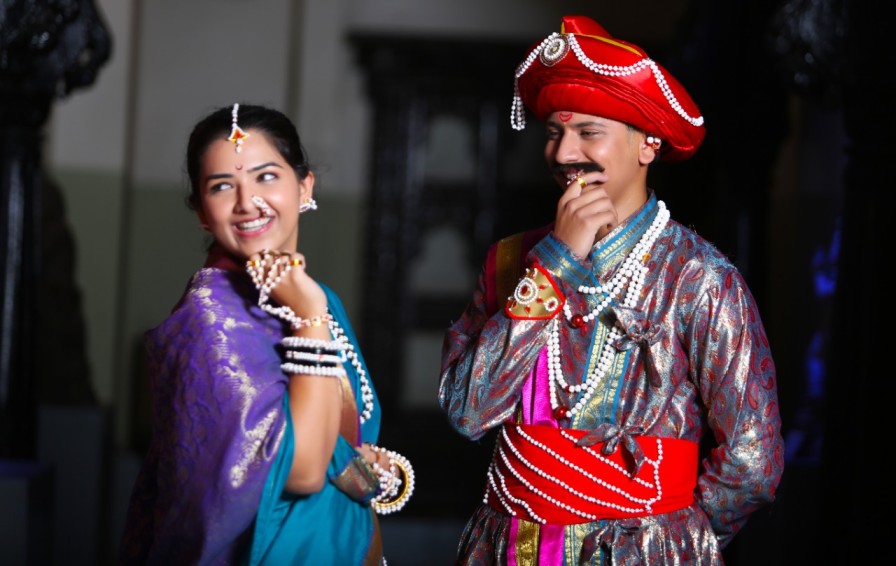Anjali Atul Padhye remembers sitting with several tiny white sugar beads in her lap while gazing fondly at her mother as she intricately weaved the beads into jewellery.
A 13-year-old Anjali was overwhelmed by the process at the time. But having made ‘halwa dagine’ or ‘halwyache dagine’ (sugar jewellery) for 25 years now, she has mastered the art.
“Maharashtrian tradition dictates that newlyweds should don halwa dagine for Makar Sankranti during their first year of marriage. ‘Halwa’ is a sweet dish. So the new bride is expected to wear jewellery made of halwa dagine to usher in a year of sweetness.”
Halwa dagine is prepared during the auspicious festival of Makar Sankranti where the phrase ‘Tilgul ghya goad goad bola’ is often heard as a greeting. It means, ‘Eat this Tilgul (sweet) and talk sweetly’.
The customary sugar jewellery on the other hand is made by roasting sesame seeds combined with sabudana (sago) and sugar powder. Newlywed brides are dressed in black saris—their grooms wear suits or kurtas of black—while being clad from head to toe in halwa dagine.
Also Read: 14 Photos To Make You Fall in Love with Kite-Flying Season All over Again
Thane-based Heena Khandelwal, originally from Delhi’s Baniya community, married into a Maharashtrian family. But she was afraid to wear the delicate jewellery. She says, “It is very delicate and I was worried it might break.”
But it turned out to be a sweet deal once she did put them on. January has pleasant weather so wearing jewellery made out of sugar didn’t turn into a sticky affair, says Heena who wore earrings, a neckpiece, a ‘kamar patta’ (belt) and ‘maang tikka’ (headpiece) made of halwa dagine.
A Tradition Uniting Cultures

“The halwa has to be threaded through two cotton threads. It is very difficult and intricate work. There is a specific technique that we use and I teach those who are interested, too,” adds Anjali, the Virar-based jeweller.
Anjali adds, “Every year, for Makar Sakranti, I make 100 sets of halwa dagine. Each set is priced differently — mangal sutras go for Rs 350, necklaces are priced from Rs 100-Rs 450, as per the designs that the customer requests.”
While halwa dagine might be made on a small scale by folks like Anjali, a Pune-based store Khauwale Patankar has been making sugar jewellery for hundreds of their patrons for three decades.
The woman behind the store’s halwa dagine reminisces her first Makar Sankranti wearing this type of jewellery. “I was seven months pregnant at the time and didn’t want to participate in the festivities. But my mother-in-law was so enthusiastic that she insisted I try on the jewellery. When I saw the beautiful ornaments, I couldn’t resist,” says Sonia Patankar.
“Newlyweds and newborns wear halwa dagine. The winter cold is offset as we consume the heaty roasted sesame and jaggery sweets called Tilgul,” she adds.
Also Read: Science Says Traditional Til Ke Laddoos Helps You Lose Weight & Lowers Cholesterol
Sonia is married to third-generation entrepreneur, Ramesh, who currently runs the brand that was set up in 1947. She says that inspired by her mother-in-law, they started making halwa dagine on a commercial scale in 1993.
“We had 40 women making halwa manually and another 40 who made the jewellery. I used to overlook the designs for the jewellery while my mother-in-law supervised the halwa making process,” she says, adding that she now monitors the entire process.
About the designs, Sonia adds, “We started with simple ornaments like mangalsutras and neckpieces but have today evolved with changing consumer preferences and make the same ornaments that are also available in gold. From headpieces, to elaborate nose rings and even payals (anklets) — we make it all.”
Khauwale Patankar first started with 100 sets for children and 60-70 sets for women. “Today, we sell around 5,000 sets for children, 2,500 sets for women and a lot of sets for men, too,” she says.
The jewellery for men include garlands, artificial flower bouquets decorated with halwa, rings and bracelets.

Their single-piece jewellery for women start at Rs 100 and go up to Rs 300. The whole set for kids with ‘mukut’ (crown), ‘bajuband’ (armband), wristband and garlands ranges from Rs 250-Rs 600.
For gents, the garland starts at Rs 250.
Given that the jewellery is made of sweets, one wonders if you are privy to a dessert after the festivities. But Sonia emphatically says, “No!” “You can eat these beads before making dagine but not after. They are stuck on pieces of paper and decorated with ‘kundan’ (gold), colourful beads and other embellishments. So you can’t eat it then.”
When Khauwale Patankar requested a few of their customers to showcase their halwa dagine ornaments, they didn’t anticipate the response they got.
“One of our customers shared a picture of their son-in-law who was a native of South Africa. He was so interested in the Maharashtrian tradition that he agreed to wear all those ornaments the day of,” shares Sonia.
In another instance, a Japanese daughter-in-law asked her Maharashtrian mother-in-law to don the jewellery, click a picture of herself for reference and send it to her along with the jewellery.
“It was such a beautiful moment and perfectly encapsulates the essence of this entire ritual which is to bring people together,” she concludes.
(Edited by Vinayak Hegde)
No comments:
Post a Comment